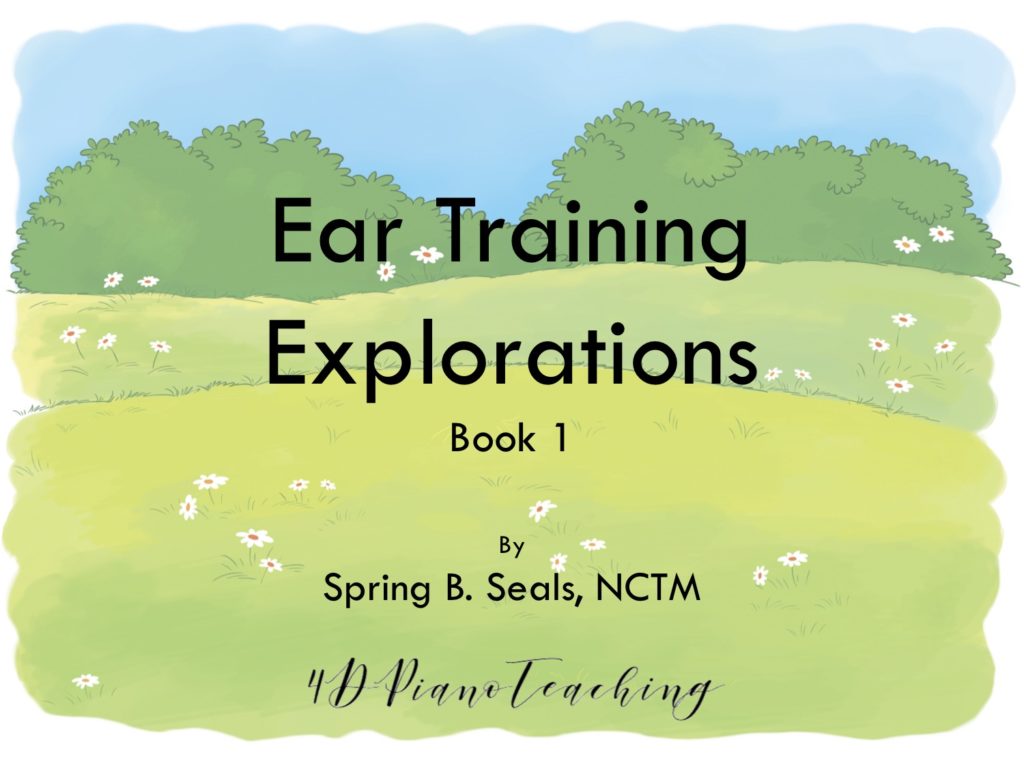Question: When was the last time you did ear training work with your students?
If I’m honest, it was probably in preparation for the theory test… and before that test came up? Yikes. It’s always so busy to fit in all we want to teach in 30 minutes so we’ve found that ear training often gets pushed to the side. Not because we don’t value it – but rather because we don’t always have time for it. And because it’s not always within the method books to remind us each week.
When Spring told me about her idea for our next book in the shop, I was so excited. This is the book I can’t wait to use in my studio and with my own children! I’ll turn the day over to her to tell us all about the new book! Be sure you check it out at the shop here.
From Spring: Aural skills have always been a weakness for me. When I was young, my teacher seemed to think that playing by ear was bad. I distinctly remember her asking my mom not to play my pieces for me so that I would learn by reading and not by ear. I believe there is a right time and place for both reading and learning by ear! But my foundation of aural skills was very weak. So I struggled with my ear training courses in college. For years I’ve been thinking about how I can avoid this with my students. I am a strong believe in building good readers, I definitely don’t want my students to learn all their pieces by ear. But, I wanted an easy way to make sure I was building their aural skills.
Introducing – Ear Training Explorations Book 1! This fun, woodland-theme ebook will help guide any teacher to include ear training in regular lessons. I wanted to make ear training accessible and fun for our youngest students, and hopefully that is what I’ve accomplished with this resource.

What do you get?
- 14 page colorful and appealing ebook for students
- 5 page teacher guide
- 60+ listening activities for the student to complete
- Printable Certificate of Completion
What skills are covered?
- Identifying high, medium, and low sounds
- Listening for major or minor (happy or sad)
- Hearing staccato versus legato (smooth or bouncy)
- Identifying moving up, down, or staying the same
- Rhythmic dictation including quarter, half, and whole notes
- Stepwise melodic dictation
- Identifying dynamic changes (crescendo, diminuendo, forte, piano)
How can you use this in your studio?
Purchasing the ebook gives you rights to print as many copies as you want for your students. You can be fancy and have it printed in full color and bound at Office Depot for each student. Or you can print it out and hole punch it to add to your students’ binders. You can even just give them one page at a time, as you are covering the pages in the lesson time. The ebook is flexible and can be used in whatever way works best for you!
So check out our newest resource in the 4DPiano Shop – we think you and your students will love our new ebook!
